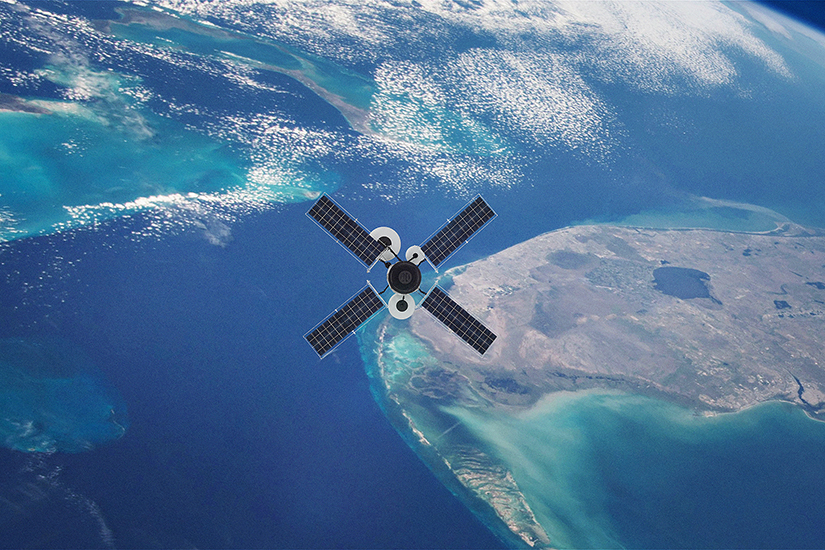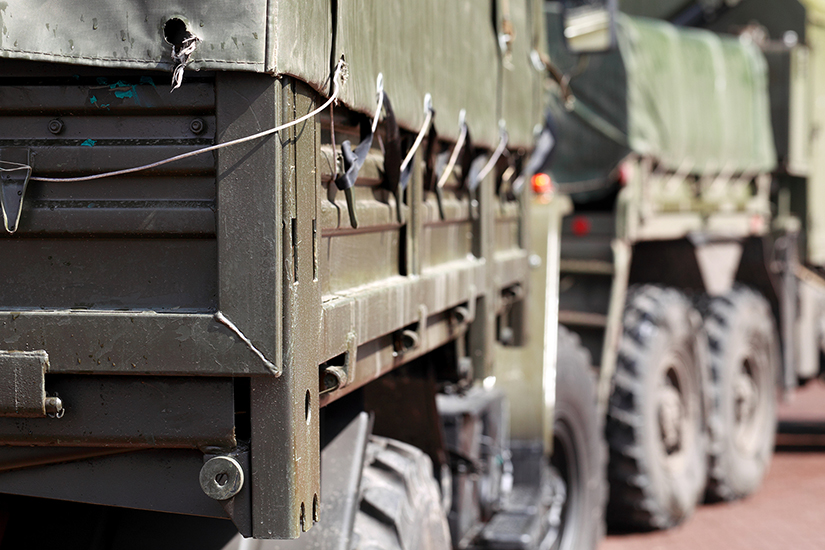On December 16, 2022, the Japanese government made a cabinet decision on three security documents: a new National Security Strategy, National Defense Strategy, and Defense Buildup Program. This means that Japan has decided to strengthen its security posture in a more concrete and practical manner in the face of historic changes in the security environment, such as Russia's attempt to unilaterally change the status quo by force, symbolized by its invasion of Ukraine, and the strengthening of nuclear and missile capabilities by North Korea and China. At a press conference on the same day, Prime Minister Fumio Kishida said Japan would enhance its ability to respond to new domains such as outer space, cyberspace, and the electromagnetic spectrum, the ability to counterattack against air threats, and the ability to defend the southwest region with an eye to threats from China[1]. In this paper, I discuss how to accelerate the realization of these new defense capabilities by advancing multilateral cooperation, which has lagged in the Japan-U.S. alliance to date, using the partnership with Europe, which has become more integrated in terms of security since the Russian invasion of Ukraine, as an example.
Responding to New Domains: Building Partnerships Against Hybrid Threats
After the Russian invasion of Ukraine on February 24, 2022, the United States and other Western countries, as well as the North Atlantic Treaty Organization (NATO), successfully mitigated the impact of the attack through direct and indirect military and technical assistance under the Comprehensive Assistance Package for Ukraine. Multilateral cooperation in new domains, such as cyber defense and the provision of commercial satellite imagery, has contributed to mitigating the impact of Russia’s “hybrid warfare”[2]. In the future, as hybrid warfare against other countries is expected to occur in East Asia in conjunction with China's attempt to annex Taiwan, Japan must, in addition to its bilateral cooperation based on the Japan-U.S. Alliance[3], seek multilateral partnerships to limit the impact of such attacks on both military and civilian life, and seek a response that emphasizes cooperation.
NATO, which views Japan as a Global Partner, has defined cyberspace and outer space as military theaters of operations since 2014, and has agreed that a major attack there could be a requirement for invoking the collective security clause (Article 5) of the North Atlantic Treaty. The European Union (EU), which is working to strengthen European security, also considers cyberattacks and disinformation as existential threats to the stability of Europe, and has established an independent Center of Excellence (COE) for hybrid threats[4]. In its Defense Buildup Program formulated in February 2022, Japan has also made clear that it will strengthen its ability to cope in new domains, and the foundation is in place to strengthen practical partnerships with European countries that are building a cross-sectoral response posture.

Counterattack Capability: Advanced Technology Cooperation Needed to Deter and Respond to Air Threats
The "stand-off defense capability" to launch missiles from outside the enemy's range is one type of counterattack capability, and it is an important component of Integrated Air and Missile Defense (IAMD). Currently, the air threats that IAMD must deal with are characterized by (1) longer range missiles, (2) multiple individual guided reentry vehicle (MIRV) and maneuverable reentry vehicle (MaRV) warheads, and (3) anomalous flight trajectories that are difficult to intercept. Furthermore, in terms of operations, new threats are characterized by (4) the diversification of launch modes (fixed launchers, transport standing launchers (TELs), and submarines) and their surprise attacks, and (5) the frequent use of saturation attacks by maintaining simultaneous launch capabilities. This means that air threats are rapidly evolving and becoming more diverse.
In response to these changes, Japan has become keenly aware of the importance of destroying or neutralizing threats at the so-called "Left of Launch"[5] stage, which occurs before the actual launch. To realize this goal, there is an urgent need to improve comprehensive intelligence capabilities for setting attack targets (targeting) and to develop a command and control (C2) system for organized counterattacks. Furthermore, although the development of such systems cannot be achieved overnight, image recognition and remote sensing technologies to visualize the status of ballistic missiles on the ground, and emerging and disruptive technologies (EDTs) such as artificial intelligence (AI), quantum computing, and autonomous functions to promptly analyze threats also need to be implemented in the IAMD system as quickly as possible.
NATO, which has a ballistic missile defense system centered on the ground-based Aegis Ashore, is also facing difficulties in intercepting ballistic missiles at the "right of launch" stage, after they are launched. This is likely to lead to the construction of a new IAMD in NATO.As technological innovation rapidly advances in both the civilian and military spheres, EDTs based on advanced dual-use technology that can also be applied to military technology will be key to deterring and responding to evolving air threats. This inevitable change offers reason for Japan to further advance its partnerships with European countries facing shared threats through cooperation and coordination on EDTs.

Strengthening Southwest Defense: Bolstering Military Supply Chains with Partner Countries
One of the lessons of the recent Russian invasion of Ukraine is that, in the face of a prolonged armed conflict, securing the ability to continue the war becomes a major challenge. In fact, in the West, more than political decisions regarding the provision of frontal equipment such as tanks and artillery to Ukraine, the reduction in logistics reserves caused by the massive depletion of ammunition and missiles on the battlefield has caused serious national security problems in the supporting countries. This not only exposed the limitations of the physical manufacturing capacity of the defense industry in the West, which had not experienced inter-state war since World War II, but also highlighted vulnerabilities in the production and supply of modern equipment through the trend of the incorporation of semiconductors and other technology-intensive components in missiles and other ammunition. This means that NATO now has to make a decision on how to respond to this situation. In responding to this situation, NATO, in addition to promoting the commonization and standardization of ammunition and missiles among member countries, has begun considering the establishment of a system in which surplus stockpiles and increased production can be accommodated within the alliance by coordinating supply chains among member countries[6]. This could be seen as a positive step by Europe to secure supply chains for ammunition, maintenance, supplies, and goods within Western countries in the event of an emergency, and to ensure mutual complementarity among the volunteer countries.
Japan, too, is not yet fully prepared in terms of logistical supply and operational support in the event of a prolonged military contingency in the southwestern region or islands. In such a case, flexible thinking will be required to promote the commonization of ammunition and equipment with partner countries such as Australia, New Zealand, and South Korea, and to strengthen supply chains in anticipation of contingencies while referring to the new logistical support initiatives being considered by NATO. In addition, it would be desirable to develop supply chains with European countries in advance to improve interoperability in military aspects, such as semiconductors and ammunition, in anticipation of increased opportunities for security cooperation in the future.
However, strategic efforts to rebuild supply chains in Japan should not be the responsibility of the private defense industry, as this is a critical and urgent issue that is essential for Japan's defense. It should be accomplished by the government taking the lead in developing a foundation for cooperation with the defense industries and communities in partner countries from political, diplomatic, and economic perspectives.

Conclusion
During Secretary General Jens Stoltenberg's visit to Japan in January 2023, it was confirmed that the strategic and practical relationship between Japan and NATO has been strengthened with the evolution of cooperation in new domains and progress toward the development of a new cooperation document, the Individually Tailored Partnership Program (ITPP). Already in the revised NATO Strategic Concept for 2022[7], NATO has identified (1) the further strengthening of deterrence and defense capabilities, (2) vigilance against an ambitious China in addition to Russia as a clear threat, and (3) strengthening relations with partner countries and institutions in new domains, as the alliance's priorities. I believe that these three points are in line with the direction of Japan's security policy as indicated in the three security documents. This is due in part to Prime Minister Kishida's participation in the NATO summit in June 2022, where Japan enhanced its security presence in Europe as an Asia-Pacific Partner (AP4) along with Australia, New Zealand, and South Korea, and the high expectations of the European side can be seen in the background[8]. Japan is expected to strategically promote a security posture based on new partnerships with European countries in addition to the Japan-U.S. alliance in order to overcome the numerous challenges indicated in the three security documents, with a view to building a global security posture.
(2023/03/20)
Notes
- 1 Prime Minister’s Office of Japan, “Press Conference by Prime Minster Kishida,” December 16, 2022.
- 2 This refers to a method of warfare that combines physical military attacks with non-military attacks, such as cyber-attacks, deception, sabotage, and disinformation dissemination, with the goal of ending military operations quickly and at low cost, after destabilizing the situation in the target country and making its social systems vulnerable.
- 3 As an ally, the United States, in its integrated deterrence, which is at the core of its defense strategy, emphasizes seamlessly (without boundaries) integrated warfighting in the combat zone, and since 2011 it has confirmed the need for coordinated cooperation with Japan in the new domains. MOFA, ”Joint Statement of the Security Consultative Committee Toward a Deeper and Broader U.S.-Japan Alliance: Building on 50 Years of Partnership,” June 21, 2011.
- 4 Hybrid CoE , “ Hybrid CoE - The European Centre of Excellence for Countering Hybrid Threats, ” March 21,2022.
- 5 When the flow of a missile attack is arranged chronologically from launch to impact, the stage before the missile is launched is referred to as the "left side of launch" because it is positioned to the left of the launch time in the chronological sequence.
- 6 NATO, “NATO Secretary General in Ramstein: we must urgently step up support for Ukraine,” January 2023.
- 7 NATO, ”STRATEGIC CONCEPT – NATO,” June 29, 2022.
- 8 MOFA, ”NATO Asia-Pacific partners (AP4) Leaders’ Meeting,” June 29, 2022.

